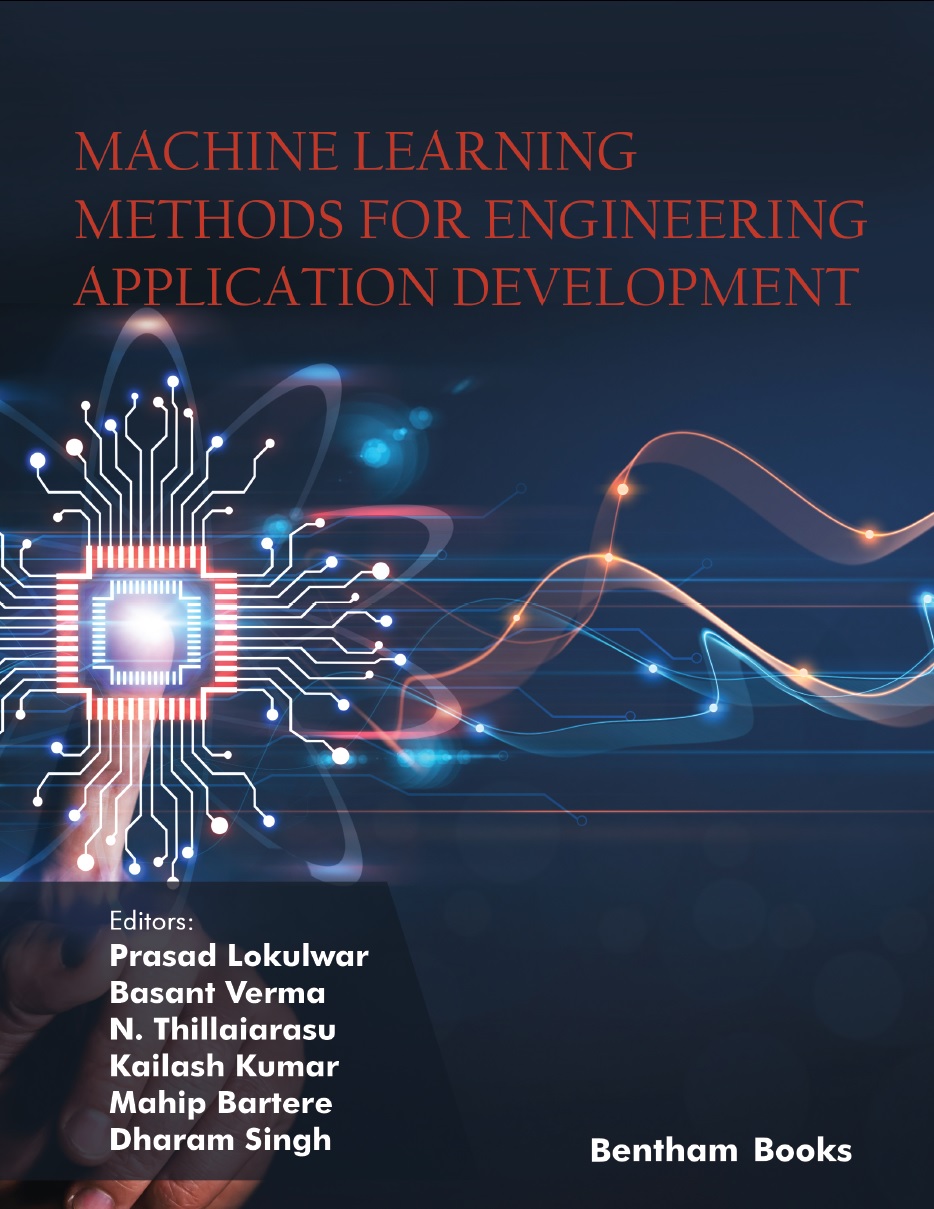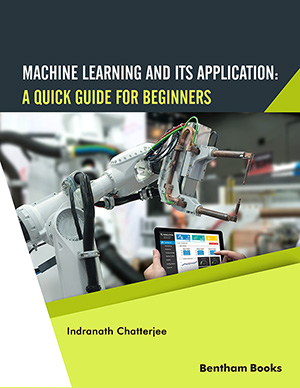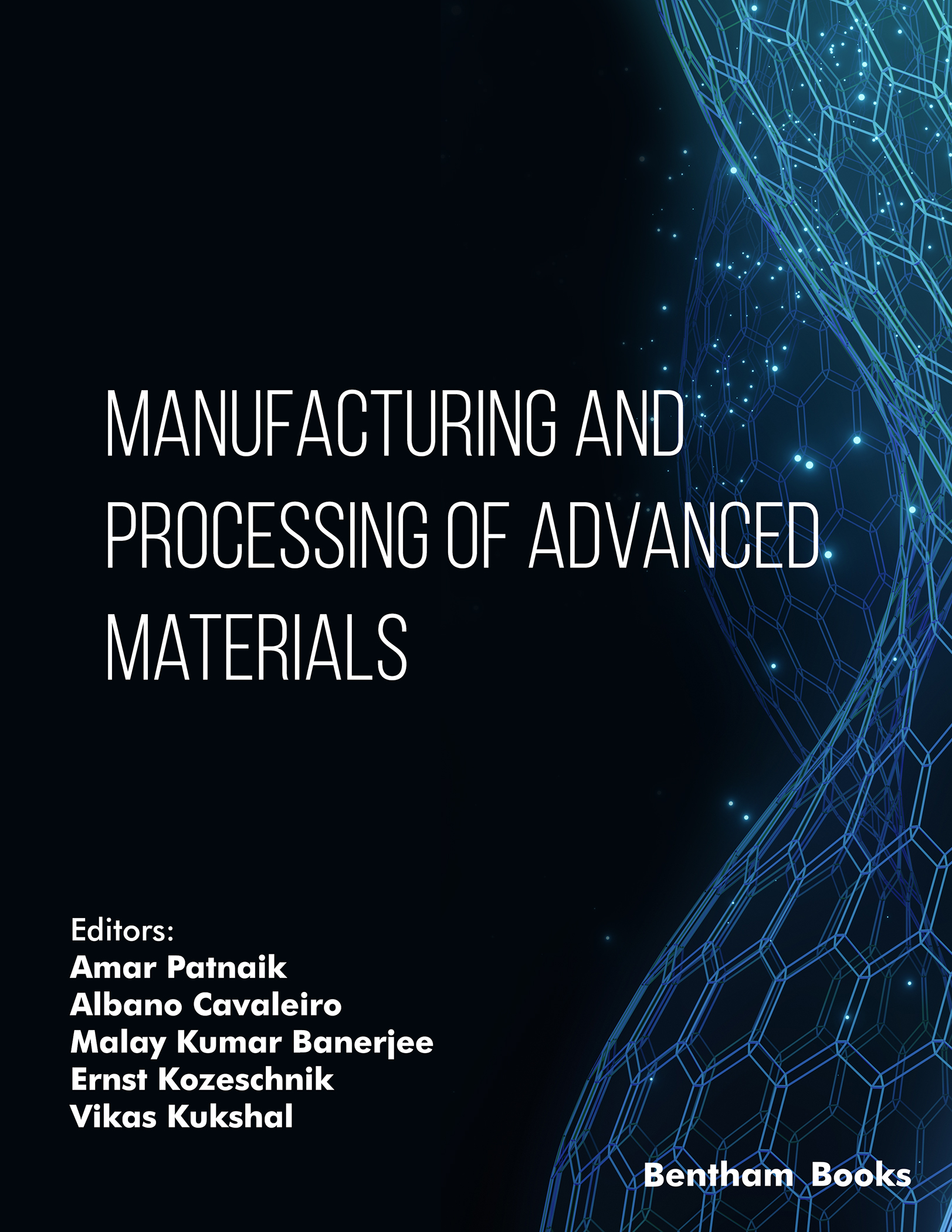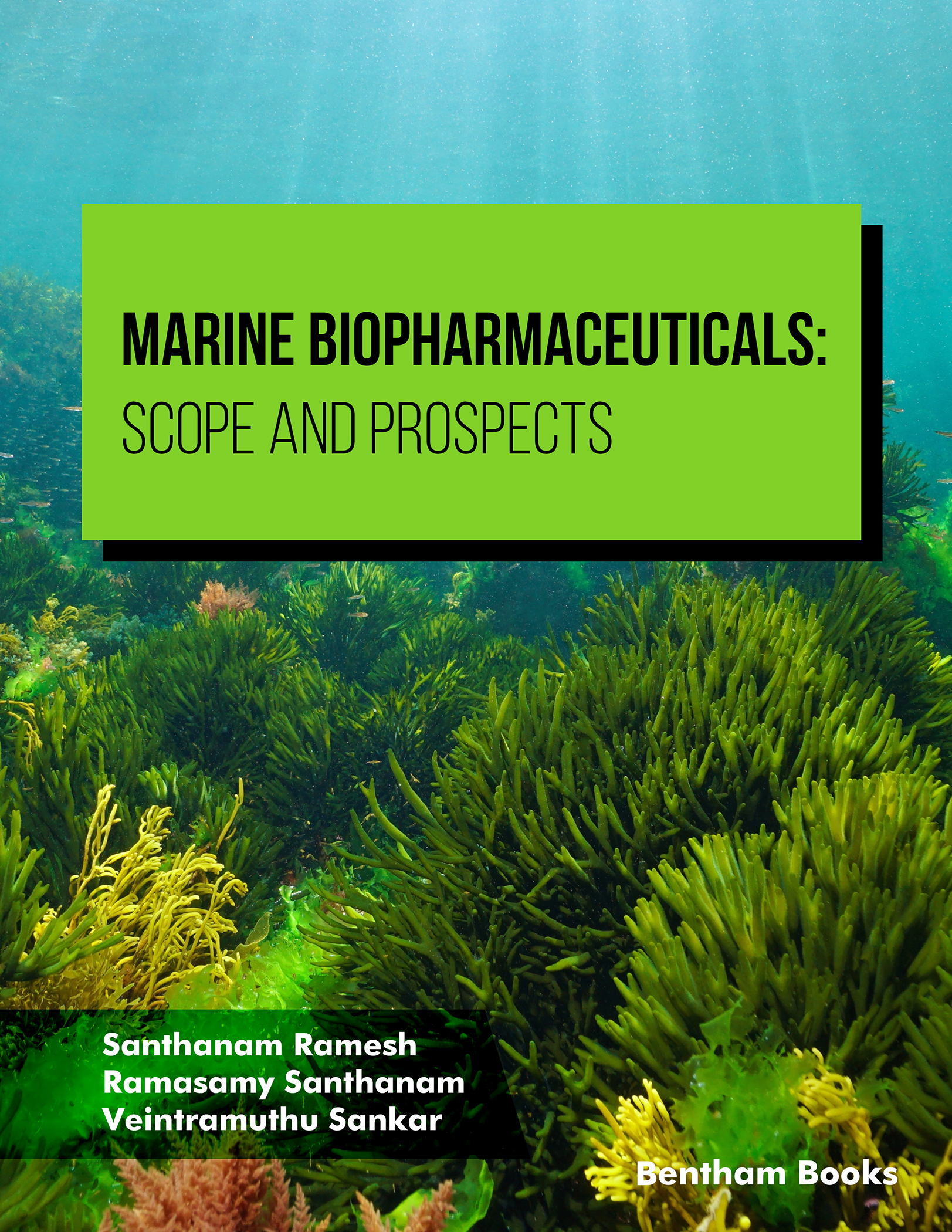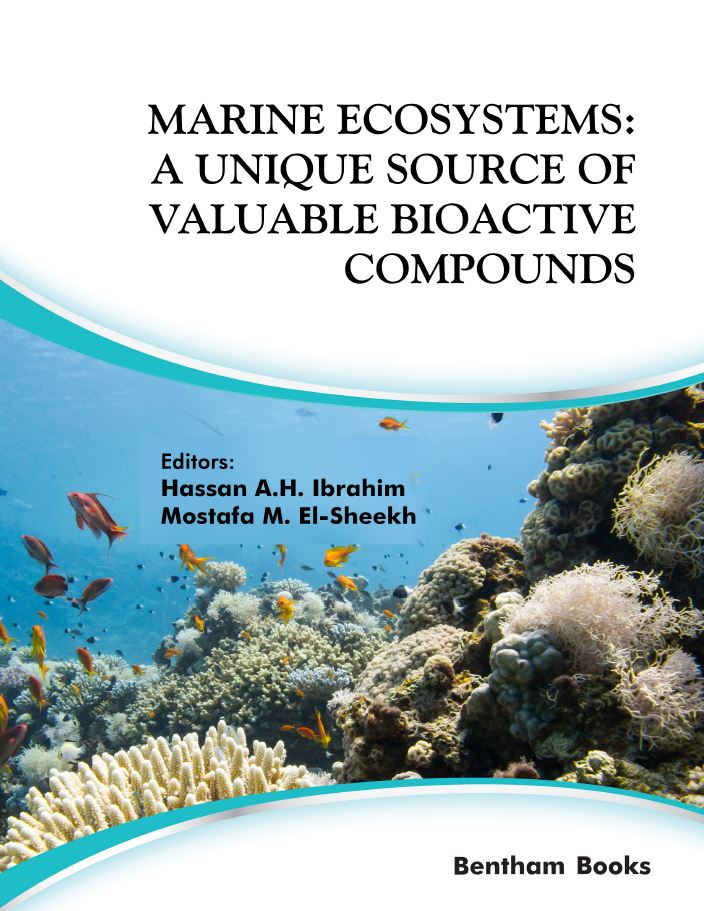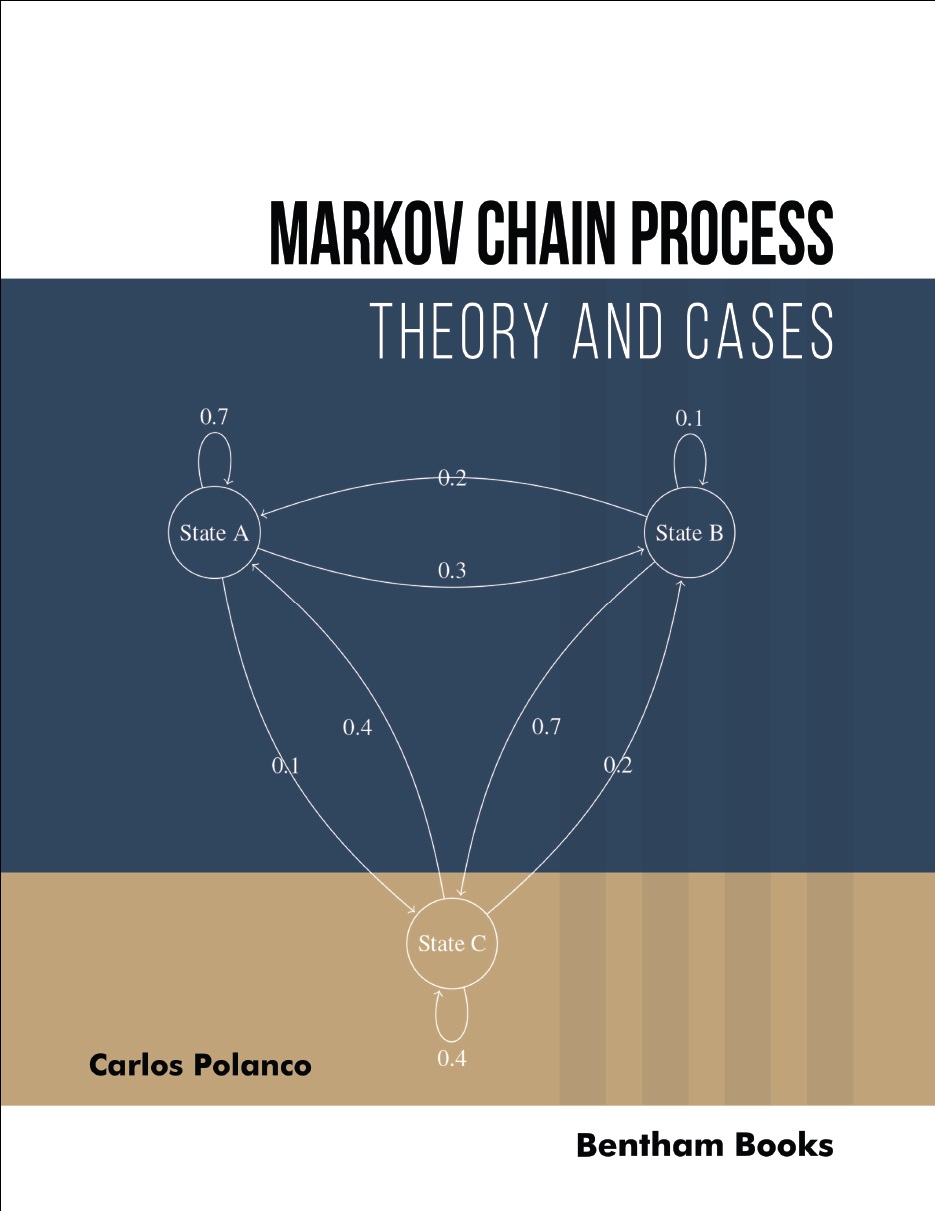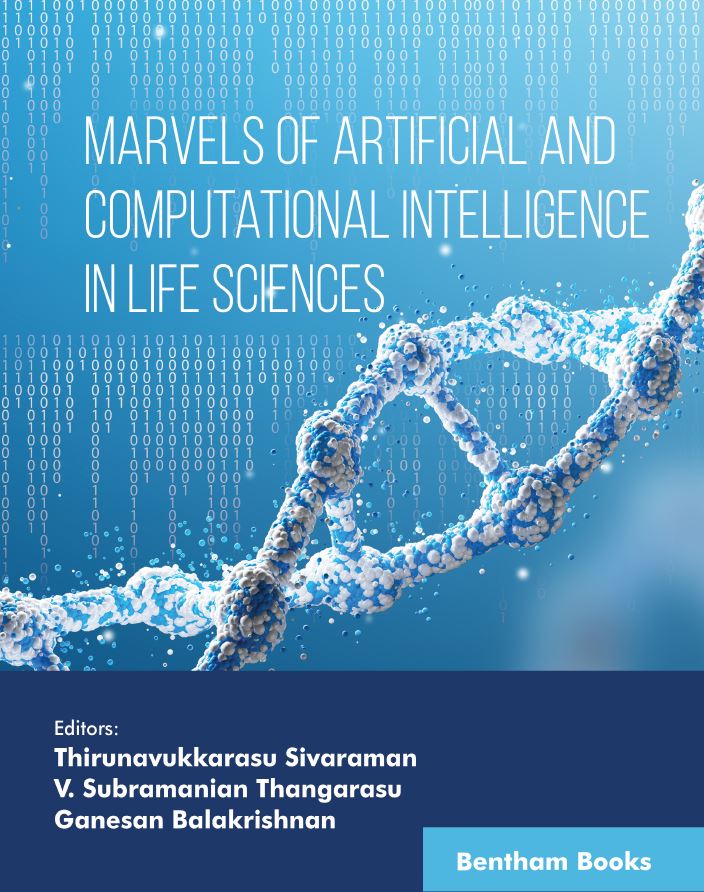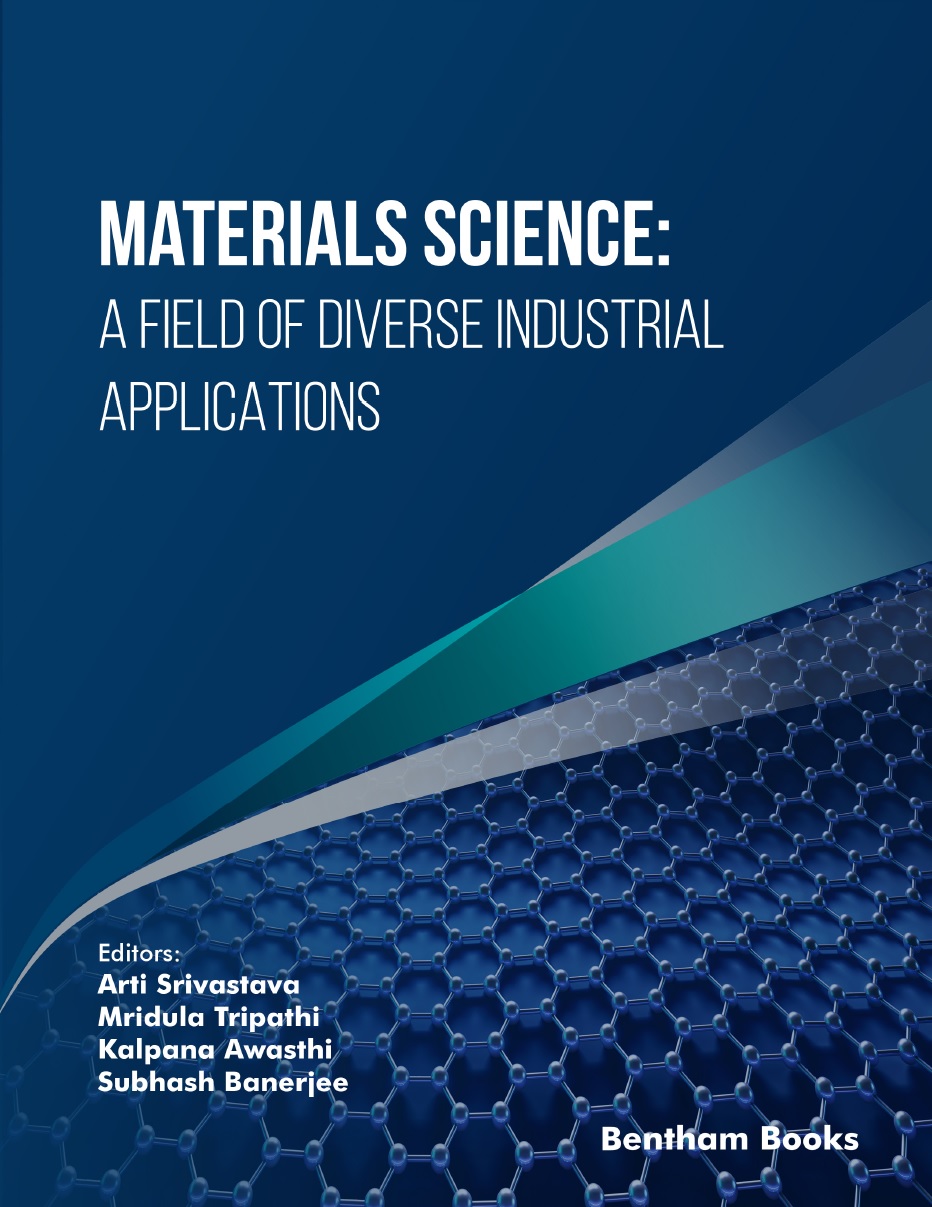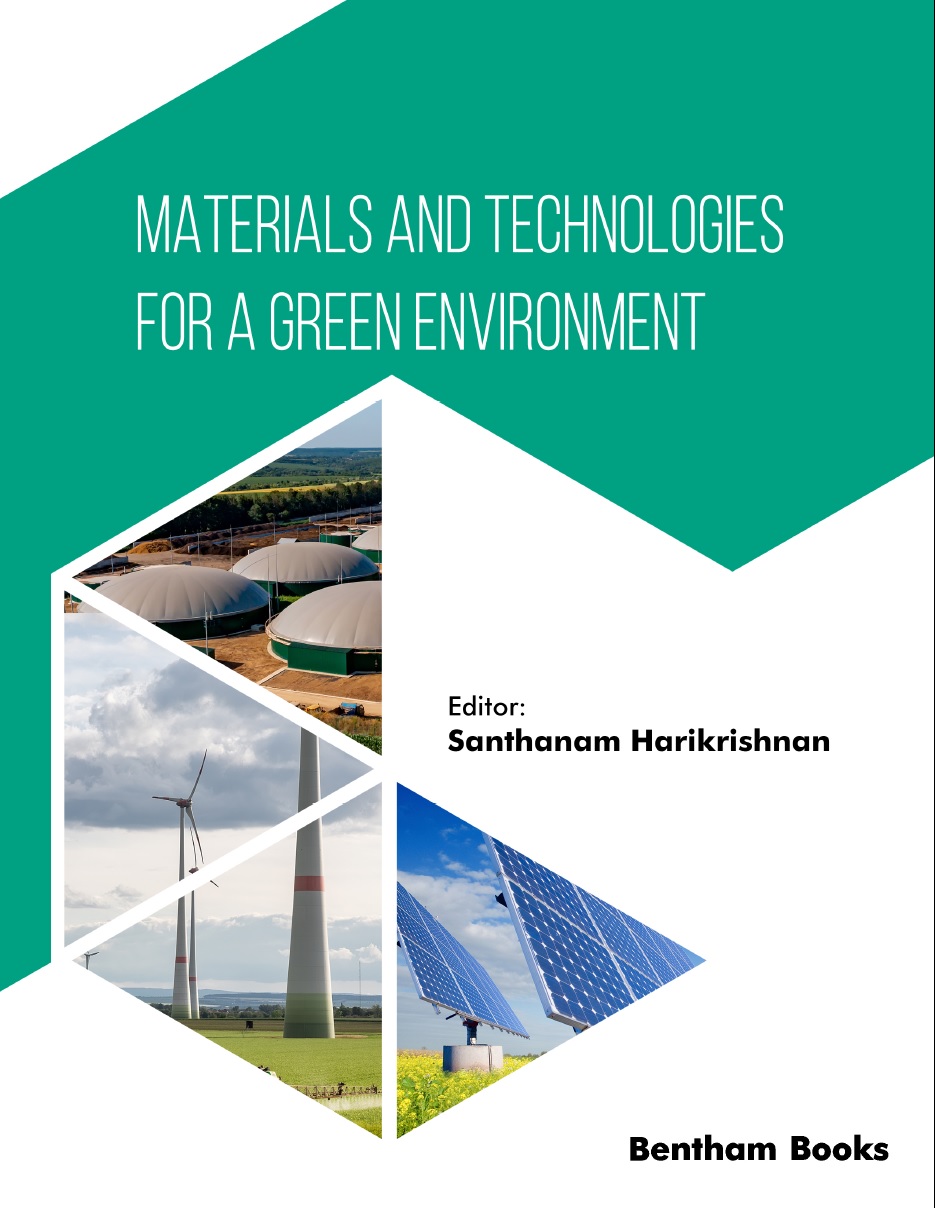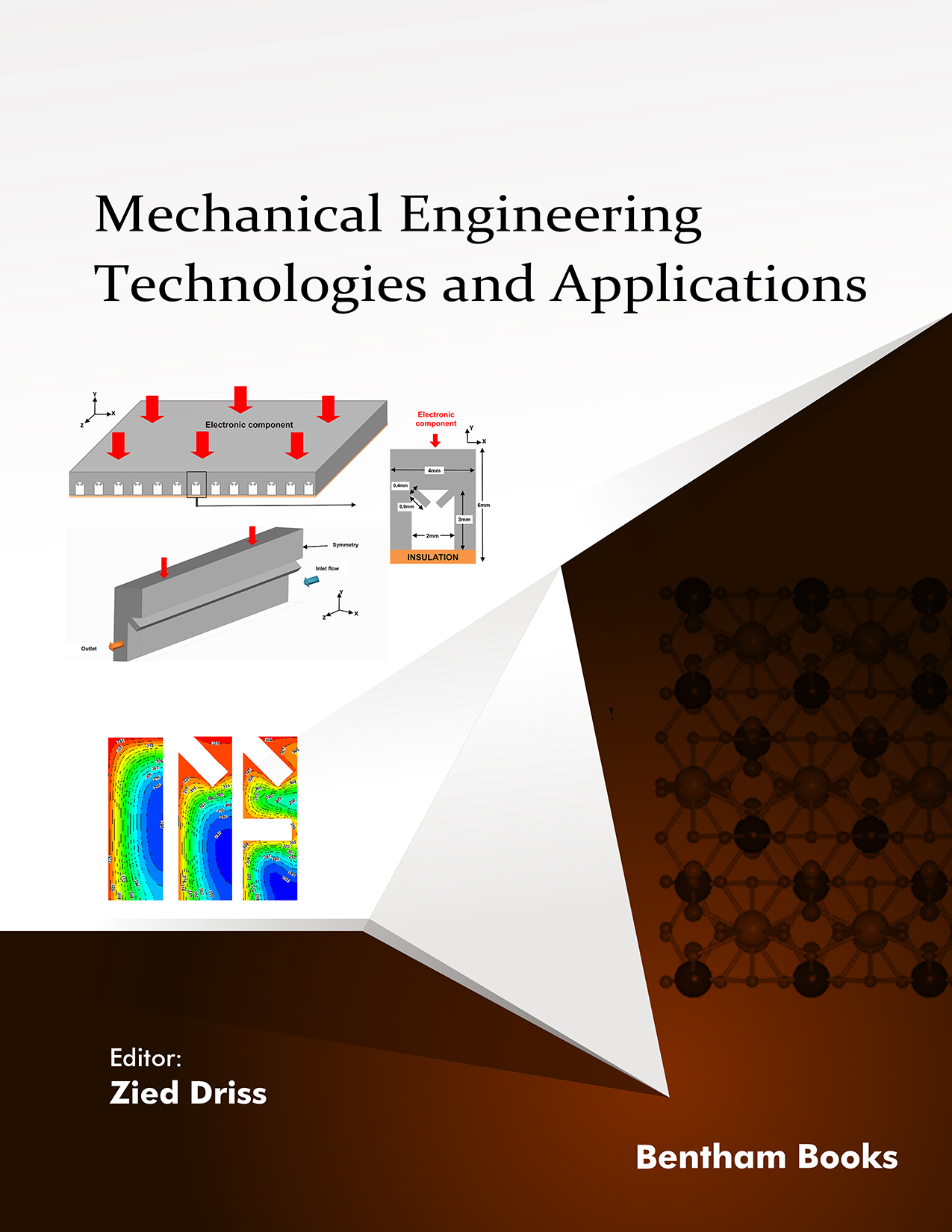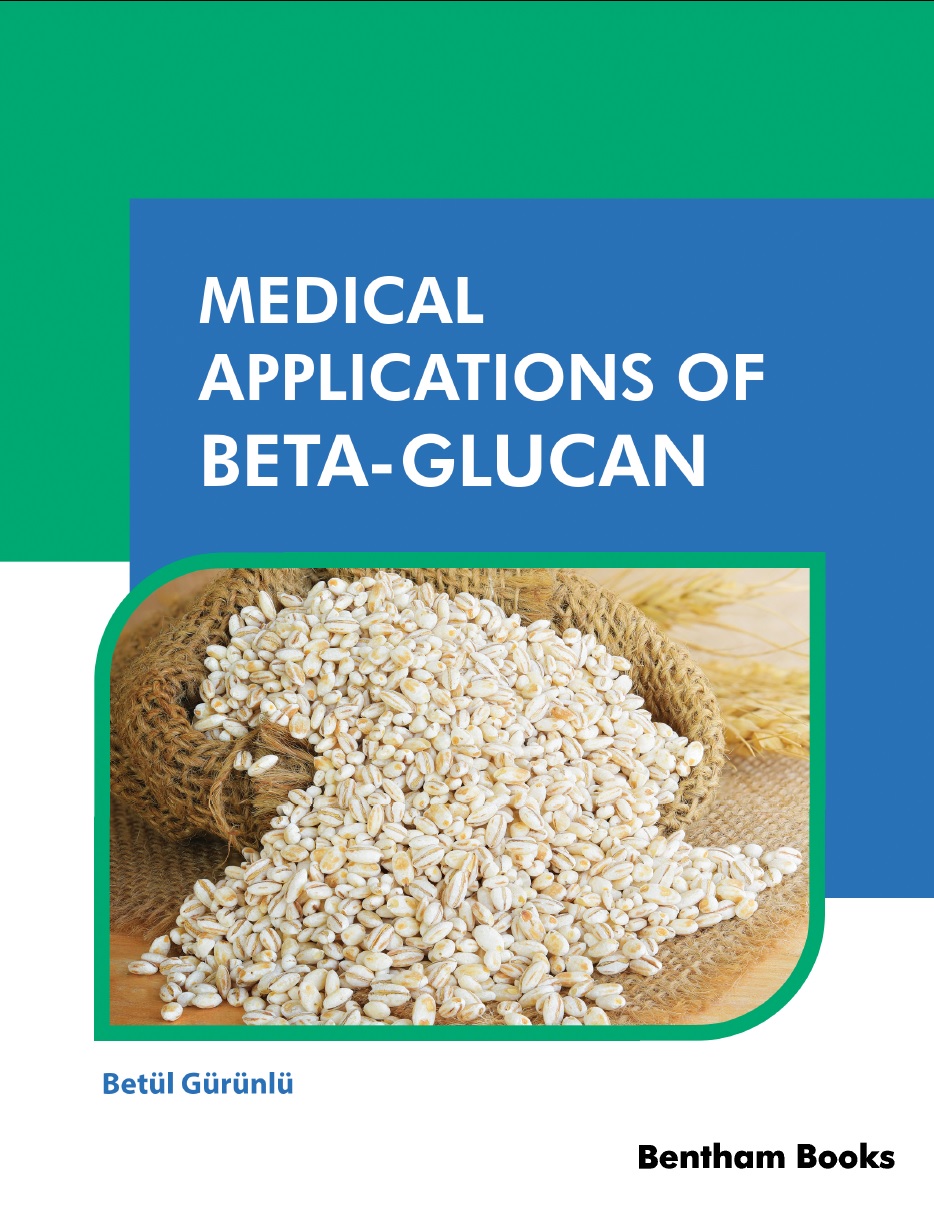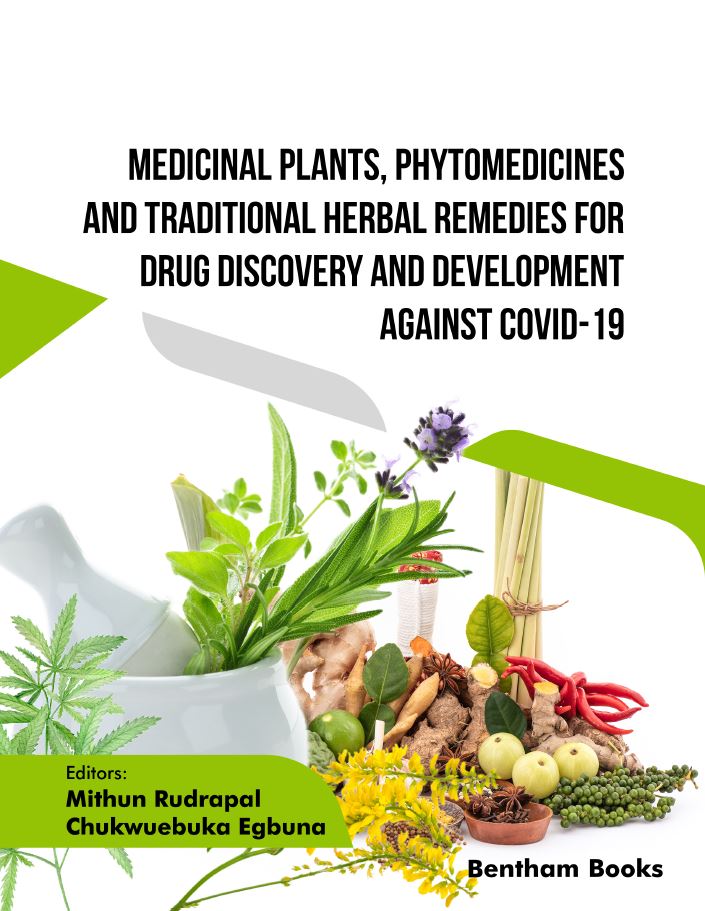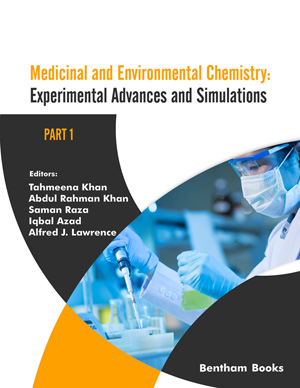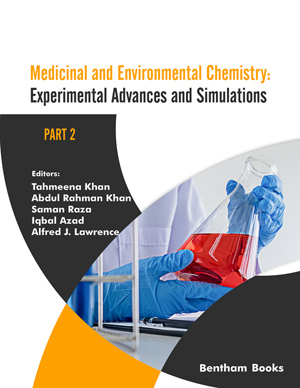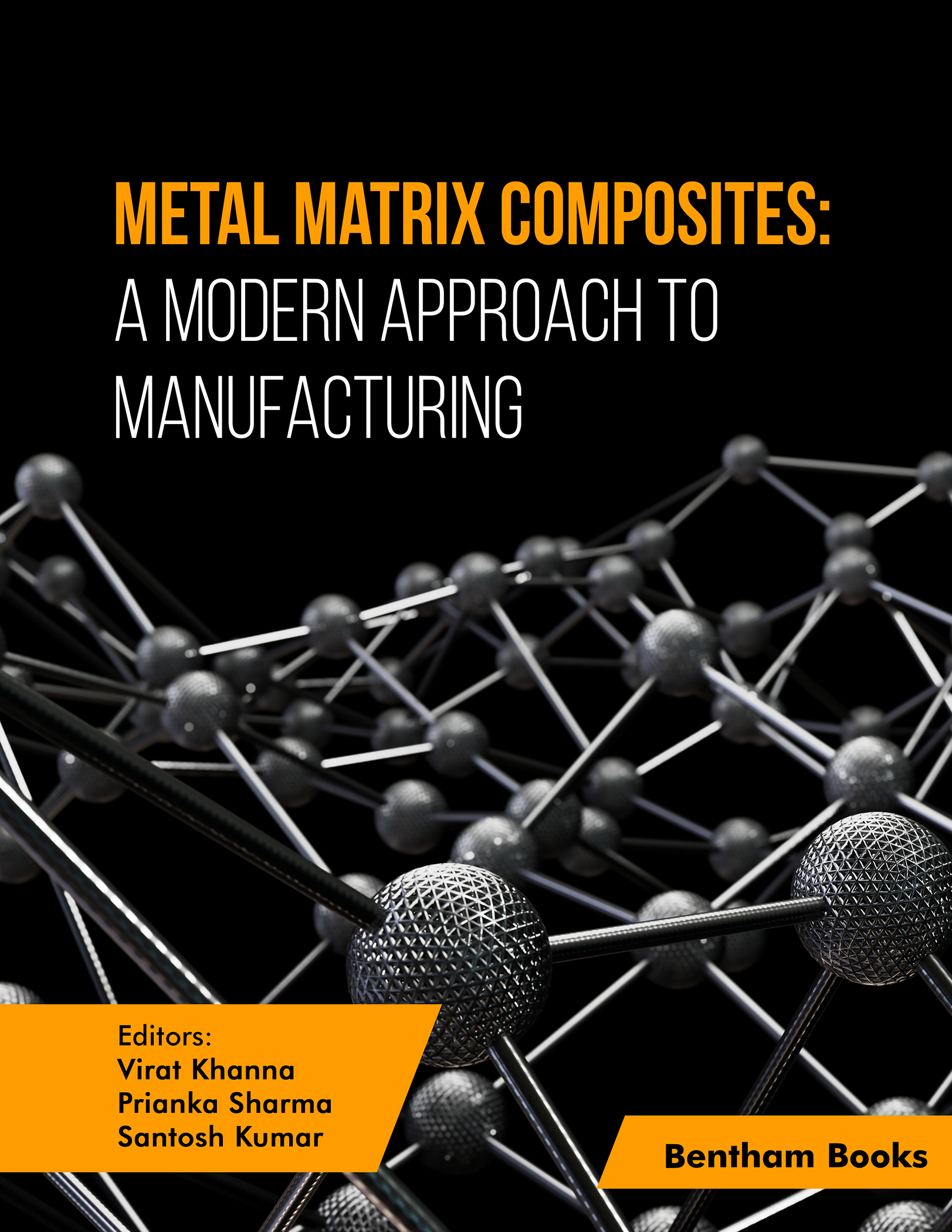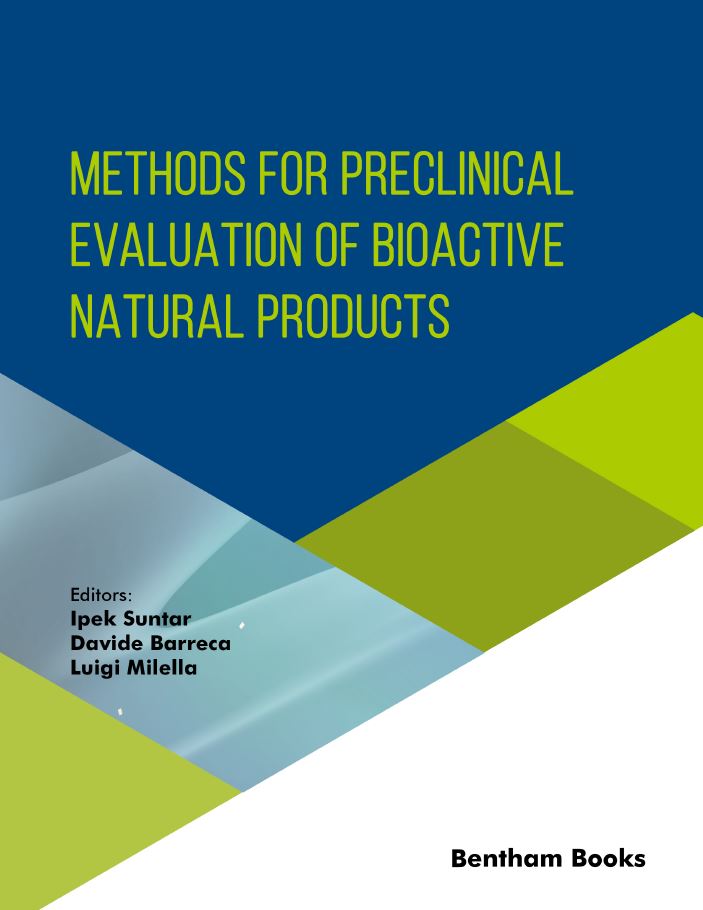- Home
- Publishers
- Bentham Science Publishers
Bentham Science Publishers
Bentham Science Publishers is a major publisher of more than 100 peer-reviewed science, technology and medical (STM) journals, along with a rapidly growing collection of eBooks. Since 1993, Bentham Science Publishers has been catering to the information needs of the pharmaceutical, engineering, biomedical and medical research community.501 - 520 of 812 results
-
-
Machine Learning Methods for Engineering Application Development
More LessThis book is a quick review of machine learning methods for engineering applications. It provides an introduction to the principles of machine learning and common algorithms in the first section. Proceeding chapters summarize and analyze the existing scholarly work and discuss some general issues in this field. Next, it offers some guidelines on applying machine learning methods to software engineering tasks. Finally, it gives an outlook into some of the future developments and possibly new research areas of machine learning and artificial intelligence in general.
Techniques highlighted in the book include: Bayesian models, support vector machines, decision tree induction, regression analysis, and recurrent and convolutional neural network. Finally, it also intends to be a reference book.
Key Features:
- Describes real-world problems that can be solved using machine learning
- Explains methods for directly applying machine learning techniques to concrete real-world problems
- Explains concepts used in Industry 4.0 platforms, including the use and integration of AI, ML, Big Data, NLP, and the Internet of Things (IoT).
- It does not require prior knowledge of the machine learning.
This book is meant to be an introduction to artificial intelligence (AI), machine earning, and its applications in Industry 4.0. It explains the basic mathematical principles but is intended to be understandable for readers who do not have a background in advanced mathematics.
-
-
-
Machine Learning and Its Application: A Quick Guide for Beginners
More LessMachine Learning and Its Application: A Quick Guide for Beginners aims to cover most of the core topics required for study in machine learning curricula included in university and college courses. The textbook introduces readers to central concepts in machine learning and artificial intelligence, which include the types of machine learning algorithms and the statistical knowledge required for devising relevant computer algorithms. The book also covers advanced topics such as deep learning and feature engineering.
Key features:
- 8 organized chapters on core concepts of machine learning for learners
- Accessible text for beginners unfamiliar with complex mathematical concepts
- Introductory topics are included, including supervised learning, unsupervised learning, reinforcement learning and predictive statistics
- Advanced topics such as deep learning and feature engineering provide additional information
- Introduces readers to python programming with examples of code for understanding and practice
- Includes a summary of the text and a dedicated section for references
Machine Learning and Its Application: A Quick Guide for Beginners is an essential book for students and learners who want to understand the basics of machine learning and equip themselves with the knowledge to write algorithms for intelligent data processing applications.
-
-
-
Manufacturing and Processing of Advanced Materials
More LessExplore the world of advanced materials and their manufacturing processes through this authoritative and enlightening reference. Discover how these innovations are shaping the future of high-tech industries and making a profound impact on our world. Manufacturing and Processing of Advanced Materials compiles current research and updates on development efforts in advanced materials, manufacturing, and their engineering applications. The book presents 22 peer-reviewed chapters that cover new materials and manufacturing processes. Key Topics Materials for the Future: Properties, classifications, and harmful effects of advanced engineering Innovative Manufacturing Techniques: Nanotechnology in material processing and manufacturing innovation. Advanced Welding and Joining: laser welding and friction stir welding in manufacturing composite materials. Sustainable Practices: 4. Eco-Friendly machining, water vapor cutting fluid, for high-speed milling., natural fiber reinforcement with materials like bamboo leaves. Advanced Materials Characterization and Modeling: Carbon nanotube (CNT)-reinforced nanocomposites and tribology for durable and reliable materials ensuring reliability. Materials for Energy and Electronics: Energy Storage Innovations and smart materials for electronic devices Novel Drilling and Machining Processes: Microwave drilling, electric discharge machining and die-sinking electric discharge machining for metal matrix composites. Innovations in Nanoparticle Production: Spark discharge method (SDM) for advanced nanoparticle production. The book caters to a diverse audience, offering an invaluable resource for researchers, engineers, graduate students, and professionals in materials science, engineering, chemistry, and physics. By enhancing their knowledge and expertise, readers are poised to become key contributors to various industries and technological advancements.
-
-
-
Marine Biopharmaceuticals: Scope and Prospects
More LessMarine Biopharmaceuticals: Scope and Prospects is a collaboration of experts in pharmacology, biology and biochemistry with a focus on Marine Bioprospecting. The book provides an in-depth exploration of promising pharmaceutical compounds found in various marine biota and their therapeutic applications. The comprehensive contents cover marine ecosystems, marine biopharmaceutical, and delve into the chemistry and therapeutic applications of compounds from diverse marine organisms such as seaweeds, sponges, cnidarians, bryozoans, worms, shellfish, tunicates, and fishes.
The chapters also highlight approved and marketed marine biota-derived drugs and marine biota-derived drug candidates currently under clinical trials. Marine biopharmaceutical compounds targeting SARS-CoV-2 are also covered, reflecting the latest developments in the field. The editors conclude the book by advocating for the establishment of professional grade Marine Biopharmacy courses at university level to contribute to this emerging field.
This reference serves as a guide for researchers and instructors in disciplines such as Pharmaceutical Sciences, Marine Biology, Marine Microbiology, Marine Biochemistry, and Marine Biotechnology. Moreover, it is positioned as a standard reference for libraries in colleges and universities, offering critical insights for drug companies engaged in the development of new drugs from marine biopharmaceuticals.
-
-
-
Marine Ecosystems: A Unique Source of Valuable Bioactive Compounds
Marine Ecology: Current and Future Developments: Volume 3
More LessThis reference highlights the significance of marine ecosystems, encompassing seaweed beds, seagrasses, coral reefs, mangroves, estuaries, and protected areas, as a remarkable gateway to overcoming healthcare challenges and unlocking a rich trove of bioactive compounds for drug discovery.
One of the key highlights of this book is its exploration of the development of marine bio-drugs, a field that demands collaboration among scientists from both academic and industrial fronts. The editors also include a prospective review on marine environments, emphasizing the necessity for big data, collective knowledge sharing, financial support, and streamlined administrative processes, all of which contribute to enhancing innovation in the drug discovery process. Another feature includes reference lists that allow researchers to explore topics of interest in depth.
With twelve comprehensive chapters, this book extensively covers marine ecosystem biodiversity, productivity, protected areas, and the intricate interplay of biotic and abiotic factors that shape these ecosystems. Readers will learn about important bioactive compounds within marine organisms and how to use this knowledge to outline a strategy for bio-drug discovery. The book caters to a diverse audience of researchers, students, ecologists, microbiologists, pharmacologists, and biotechnologists who are engaged in studying the dynamic components of marine environments. By providing the latest insights and strategies in the realm of bio-drug discovery from marine resources, this book serves as an invaluable resource for scholars and professionals seeking to tap into the potential of these unique ecosystems.
-
-
-
Markov Chain Process: Theory and Cases
More LessMarkov Chain Process: Theory and Cases is designed for students of natural and formal sciences. It explains the fundamentals related to a stochastic process that satisfies the Markov property. It presents 10 structured chapters that provide a comprehensive insight into the complexity of this subject by presenting many examples and case studies that will help readers to deepen their acquired knowledge and relate learned theory to practice.
This book is divided into four parts. The first part thoroughly examines the definitions of probability, independent events, mutually (and not mutually) exclusive events, conditional probability, and Bayes' theorem, which are essential elements in Markov's theory. The second part examines the elements of probability vectors, stochastic matrices, regular stochastic matrices, and fixed points. The third part presents multiple cases in various disciplines: Predictive computational science, Urban complex systems, Computational finance, Computational biology, Complex systems theory, and Computational Science in Engineering. The last part introduces learners to Fortran 90 programs and Linux scripts.
To make the comprehension of Markov Chain concepts easier, all the examples, exercises, and case studies presented in this book are completely solved and given in a separate section.
This book serves as a textbook (either primary or auxiliary) for students required to understand Markov Chains in their courses, and as a reference book for researchers who want to learn about methods that involve Markov Processes.
-
-
-
Marvels of Artificial and Computational Intelligence in Life Sciences
More LessMarvels of Artificial and Computational Intelligence in Life Sciences is a primer for scholars and students who are interested in the applications of artificial intelligence (AI) and computational intelligence (CI) in life sciences and other industries.
The book consists of 16 chapters (9 of which focus on AI and 7 of which showcase the benefits of CI approaches to solve specific problems). Chapters are edited by subject experts who describe the roles and applications of AI and CI in different parts of our lives in a concise and lucid manner. The book covers the following key themes:
AI Revolution in Healthcare and Drug Discovery: AI's Impact on Biology and Energy Management AI and CI in Physical Sciences and Predictive Modeling Computational Biology The editors have compiled a good blend of topics in applied science and engineering to give readers a clear understanding of the multidisciplinary nature of the two facets of computing. Each chapter includes references for advanced readers.
-
-
-
Materials Science: A Field of Diverse Industrial Applications
More LessMaterials Science: A Field of Diverse Industrial Applications provides a comprehensive overview of recent developments in new materials and their applications across various fields. With ten chapters from reputed experts in materials chemistry, the book covers a wide range of topics including thin-film nanomaterials (including chalcogenide, zinc oxide and barium fluoride thin films), multiferroic nanoceramics, synthetic nanofibers, and polymer electrolytes. The content is divided into three sections, covering modified materials, functionalized nanomaterials, and the role of nanomaterials and modified materials in waste removal, chemical synthesis, and energy production. This book is an essential resource for researchers, scientists, and professionals in materials science, nanotechnology, and related fields who want to stay updated with recent advancements and their industrial applications. It also serves as a reference for advanced materials science courses.
-
-
-
Materials and Technologies for a Green Environment
More LessThe world faces significant challenges as the population and consumption continue to grow while fossil fuels and other raw materials are depleted at ever-increasing rates. Environmental consciousness and a penchant for thinking about material cycles have caught on with consumers. Therefore, the use of environmentally compatible materials and sustainable production methods are now desired. Materials and Technologies for a Green Environment discusses the major issues surrounding the production of energy through biofuels and waste management. It comprises seven chapters that cover various fields of interest to readers involved in environmental management and sustainability planning. The topics covered include renewable energy sources, thermoelectric generators, electric vehicles, biodiesel production from poultry waste, scramjet combustion engines, and sustainable architecture for green buildings. Given its scope, this book is a valuable resource for students, researchers and engineers in environmental science, mechanical engineering, and chemical engineering and sustainability studies.
-
-
-
Mechanical Engineering Technologies and Applications: Volume 2
More LessThis book focuses on cases and studies of interest to mechanical engineers and industrial technicians. The considered applications in this volume are widely used in several industrial fields particularly in the automotive and aviation industries. Readers will understand the theory and techniques which are used in each application covered in each chapter.
Volume 2 includes the following topics: Numerical investigation of turbulent slot jets with various nanoparticle shapes Experimental study on a sweeping gas membrane distillation unit Development of design processes for multi-spindle drilling using a neural network and expert systems Experimental investigation of a new hybrid solar collector (PV/t) system Theoretical study of the effects of combustion duration on engine performance Effects of preheating temperature and fuel-air equivalence ratio on pollution control in hydrocarbon combustion Numerical study of natural convection between two concentric ellipses with different shapes and imposed temperatures Theoretical study of the geometrical parameters effect on the behavior of a solar chimney power plant Numerical investigations of the effect of packed bed porosity on the flow behavior Comparison between a conventional and a four-stage Savonius wind rotor
The presented case studies and development approaches aim to provide readers with basic and applied information broadly related to mechanical engineering and technology.
-
-
-
Medical Applications of Beta-Glucan
More LessBeta-glucan is a polysaccharide and an important food supplement that strengthens the immune system. Beta-glucan can be obtained from many food sources such as mushrooms, yeast, or oats. Beta-glucan has a therapeutic use in the treatment of many diseases, thanks to its immune system strengthening effect. Its use helps curtail the need for administering high levels of antibiotics in case of serious infections.
This book presents information about the medical applications of beta-glucan. Starting with an introduction to the basic biochemistry and classification of beta-glucan, the contents explain the readers about its use in treating a variety of medical conditions. These include cancer, allergies, COVID-19, respiratory tract infections, hypercholesterolemia, diabetes and many other other endocrinological, immunological and infectious diseases.
This book is a comprehensive resource about the medical use of beta-glucan where any reader can find topical information and learn about recent studies on the therapeutic effects of beta-glucan on the treatment of different diseases.
-
-
-
Medicinal Chemistry for Pharmacy Students
Medicinal Chemistry of Drugs Affecting Cardiovascular and Endocrine Systems: Volume 3
More LessThe primary objective of this 4-volume book series is to educate PharmD students on the subject of medicinal chemistry. The book set serves as a reference guide to pharmacists on aspects of the chemical basis of drug action. Medicinal Chemistry of Drugs Affecting Cardiovascular and Endocrine Systems is the third volume of the series. This volume features 8 chapters focusing on a comprehensive account of drugs affecting both the cardiovascular system and the endocrine functions. The volume informs readers about the medicinal chemistry of relevant drugs, which includes the mechanism of drug action, detailed structure-activity relationships and metabolism. Topics covered include drugs that affect the renin-angiotensin system, calcium channel blockers, diuretics, hematological agents (anticoagulants, thrombolytic and antiplatelet agents), antidiabetics, antihistamines, proton pump inhibitors and therapeutic hormones. Each chapter also offers case studies and self-assessments to facilitate discussion and learning. The book equips students with a scientific foundation to competently evaluate, recommend and counsel patients and health care professionals regarding the safe, appropriate, and cost-effective use of medications. Students and teachers will also be able to integrate the knowledge presented in the book and apply medicinal chemistry concepts to understand the pharmacodynamics and pharmacokinetics of therapeutic agents in the body. The information offered by the book chapters will give readers a strong neuropharmacology knowledge base required for a practicing pharmacist.
-
-
-
Medicinal Plants, Phytomedicines and Traditional Herbal Remedies for Drug Discovery and Development against COVID-19
More LessThis comprehensive reference explores medicinal plants, phytomedicines, and traditional herbal remedies as potential sources for the prevention and treatment of COVID-19. It features 9 chapters authored and edited by renowned experts. The book specifically highlights the promising drug discovery opportunities grounded in bioactive compounds from medicinal plants and herbal medicines, offering insights into combatting SARS-CoV-2 infections and respiratory complications.
Key Highlights:
Drug Discovery Potential: Explores the vast potential of medicinal plants, phytomedicine, and traditional remedies against COVID-19, shedding light on groundbreaking drug discovery avenues.
Cutting-Edge Insights: Provides up-to-date insights into the use of medicinal plants, herbal drugs, and traditional medicines in the fight against COVID-19.
Natural Immune Boosters: Details the use of indigenous herbs, spices, functional foods, and herbal drugs for boosting immunity and preventing SARS-CoV-2 infections.
Drug Repurposing: Highlights innovative drug repurposing strategies using phytomedicine-derived bioactive compounds and phytochemical databases for COVID-19 drug development. Additional features of the book include a reader-friendly introduction to each topic and a list of references for advanced readers. This timely reference is an informative resource for a broad range of readers interested in strategies to control COVID-19, including postgraduate researchers, and pharmaceutical R&D experts. It also serves as a handbook for professionals in clinical and herbal medicine.
-
-
-
Medicinal and Environmental Chemistry: Experimental Advances and Simulations (Part I)
More LessMedicinal and Environmental Chemistry: Experimental Advances and Simulations is a collection of topics that highlight the use of pharmaceutical chemistry to assess the environment or make drug design and chemical testing more environment friendly.
The ten chapters included in the first part of this book set cover diverse topics, blending the fields of environmental chemistry and medicinal chemistry and have been authored by experts, scientists and academicians from renowned institutions. The book introduces the reader to environmental contaminants and techniques for their quantification and removal. A medicinal perspective for effects and remediation of environmental hazards, and therapeutic strategies available to design new and safer drugs, is addressed with a focus on knowledge about experimental and simulation methods. To further elaborate the importance of environmentally safe chemical practice, the concept of green chemistry has also been covered.
Specialized chapters have been included in the book about persistent organic pollutants, heavy metal and plastic pollutants, the effect of environmental xenoesterogens on human health and the potential of natural products to combat ecotoxicity.
Key Features:
1. 10 topics which blend environmental chemistry and medicinal chemistry
2. Contributions from more than 30 experts
3. Includes introductory topics on environmental pollutants, investigative techniques in drug design and environmental risk assessment and green chemistry
4. Includes specialized topics on persistent pollutants, ecotoxicity remediation and xenoestrogens
5. Bibliographic references
This reference is an essential source of information for readers and scholars involved in environmental chemistry, pollution management and pharmaceutical chemistry courses at graduate and undergraduate levels. Professionals and students involved in occupational medicine will also benefit from the wide range of topics covered.
-
-
-
Medicinal and Environmental Chemistry: Experimental Advances and Simulations (Part II)
More LessMedicinal and Environmental Chemistry: Experimental Advances and Simulations is a collection of topics that highlight the use of pharmaceutical chemistry to assess the environment or make drug design and chemical testing more environment friendly.
The eleven chapters included in the second part of this book set cover diverse topics, blending the fields of environmental chemistry and medicinal chemistry and have been authored by experts, scientists and academicians from renowned institutions. This part is more specialized in nature, focusing primarily on the effects of air pollution and water contamination on human health. Chapters covering pharmaceutical interventions and pollution control measures, respectively follow these initial topics.
Part II also features specialized topics that aim to address some unique challenges of the above mentioned problems including antibiotic pollution, pharmaceutical analysis of pollutants, chemosensors, biosteric modifications and new drug development strategies against SARS-CoV2.
Key Features:
1. 11 topics which blend environmental chemistry and medicinal chemistry
2. Contributions from more than 40 experts
3. Includes topics covering effects of air pollution on human health and disease
4. Includes specialized topics on pharmaceutical analysis in the environment, and modifications of compounds for pharmaceutical purposes
5. Bibliographic references
This reference is an essential source of information for readers and scholars involved in environmental chemistry, pollution management and pharmaceutical chemistry courses at graduate and undergraduate levels. Professionals and students involved in occupational medicine will also benefit from the wide range of topics covered.
-
-
-
Meta-Inflammation and Obesity
More LessFor decades, scientific efforts have been made to understand obesity and related diseases such as type 2 diabetes and neurodegeneration, and their link with meta-inflammation. Adipose tissue is, at present, viewed as an endocrine organ with important biological effects on metabolism and inflammation, with a possible role in the pathogenesis of obesity-associated metabolic and inflammatory diseases. Chronic systemic low-grade inflammation has gained significant attention as the key player in the pathophysiology of obesity- and aging-associated diseases. Keeping view of this trend, Meta-Inflammation and Obesity offers readers state-of-the-art knowledge on this subject. Chapters cover special topics such as gender differences in obesity-related type 2 diabetes as the consequence of inflammatory response, insights into metabolic changes caused by excessive adipose tissue (which lead to abnormal brain metabolism, neuroinflammation, cognitive decline, development of type 3 diabetes), and the importance of inflammaging in the aging process. Graduate, postgraduate and Ph. D. candidates in medicine, pharmacy, and students of applied medicine, health care professionals as well as scientists involved in adipose tissue research, meta-inflammation analysis, obesity-related medical specialties will find this book a useful reference on the link between inflammation and obesity.
-
-
-
Metal Matrix Composites: A Modern Approach to Manufacturing
More LessThis book provides a comprehensive overview of metal matrix composite manufacturing, including fabrication methods, characterization techniques, and manufacturing applications. 10 chapters cover fundamental and applied topics on matrix metal composites. The book is a resource for all readers seeking to gain an in-depth understanding of metal matrix composites with its relevance to the modern industry.
Key Features
- Includes fully referenced contributions by experts in materials science
- Provides an introduction to the subject, and a future prospective for a broad range of readers
- Reviews current knowledge on fabrication techniques and structure property relationships of metal matrix composites
- Includes dedicated chapters for reinforced composites (carbon fiber, carbon nanotubes, aluminium)
- Includes guidance on material wear and tear and
- Provides an investigation for process optimization for EDM for newly developed composites
It is designed to be an essential resource for students and professionals in the field of materials science and engineering, as well as researchers and engineers working on metal matrix composite in manufacturing industries.
-
-
-
Methods For Preclinical Evaluation of Bioactive Natural Products
More LessNatural products have dominated our lives since ancient times. Today, they are an inexhaustible source of new medications for disease treatment. The practice of evaluating bioactive compounds extracted from natural sources has also advanced significantly, prompting a need to understand current methods to identify and evaluate them. This book covers basic scientific aspects of preclinical research on natural products for specific conditions and diseases. These include aging, gynecological disorders, inflammatory disorders, renal disorders and cardiovascular disorders. Each of the 10 book chapters give a structured overview on preclinical methods on the etiology of diseases, natural products as the materials for the bioassays, extract types, concentration of the extracts/compounds for in vitro and in vivo assays, preparation of the test materials, application of the test materials, step-by-step methods and related calculations. The book is intended as a quick reference for natural product researchers, pharmacists and postgraduate students in pharmacognosy. Medical doctors working in preclinical research on natural products will also benefit from the information provided.
-

